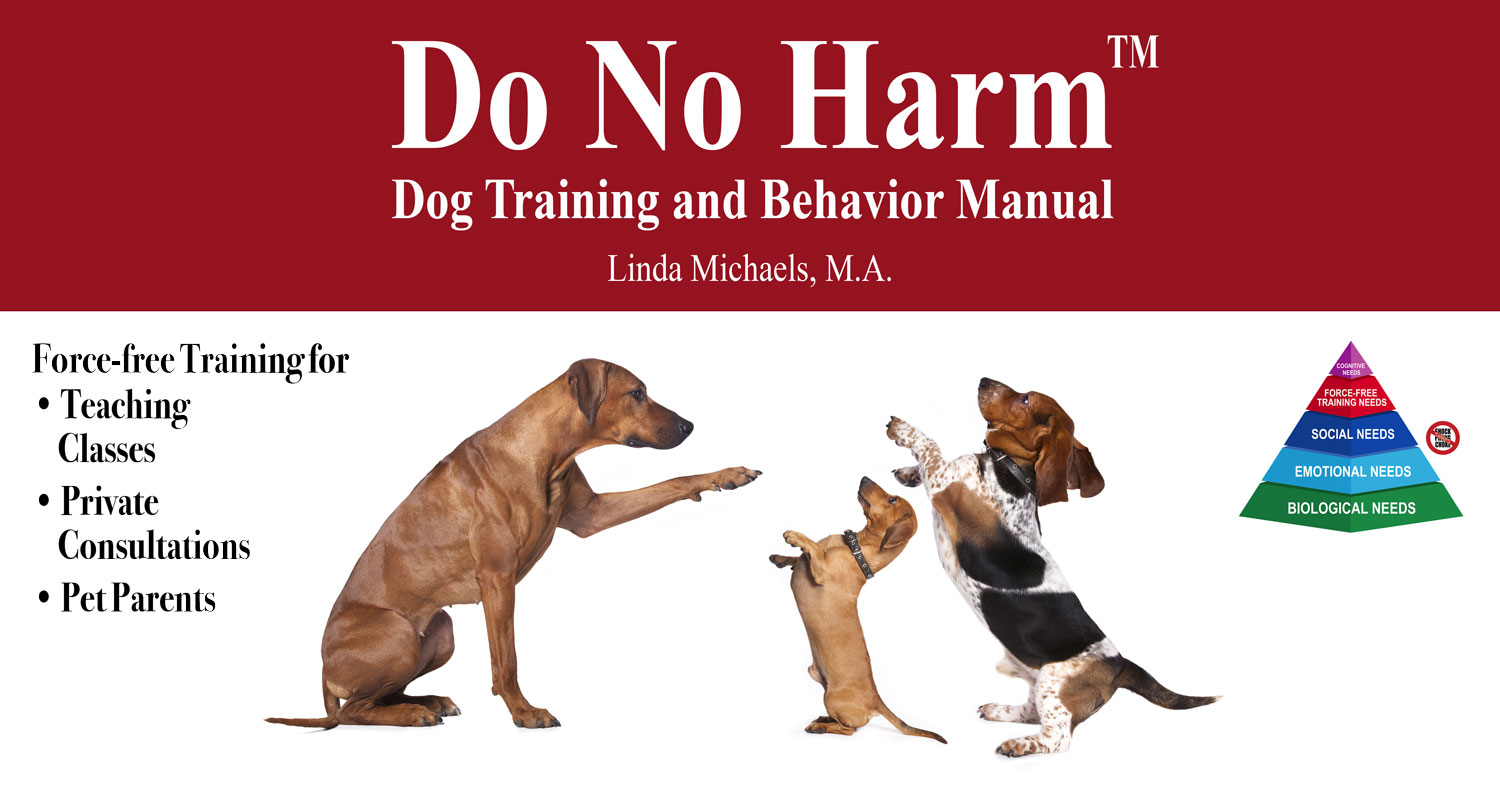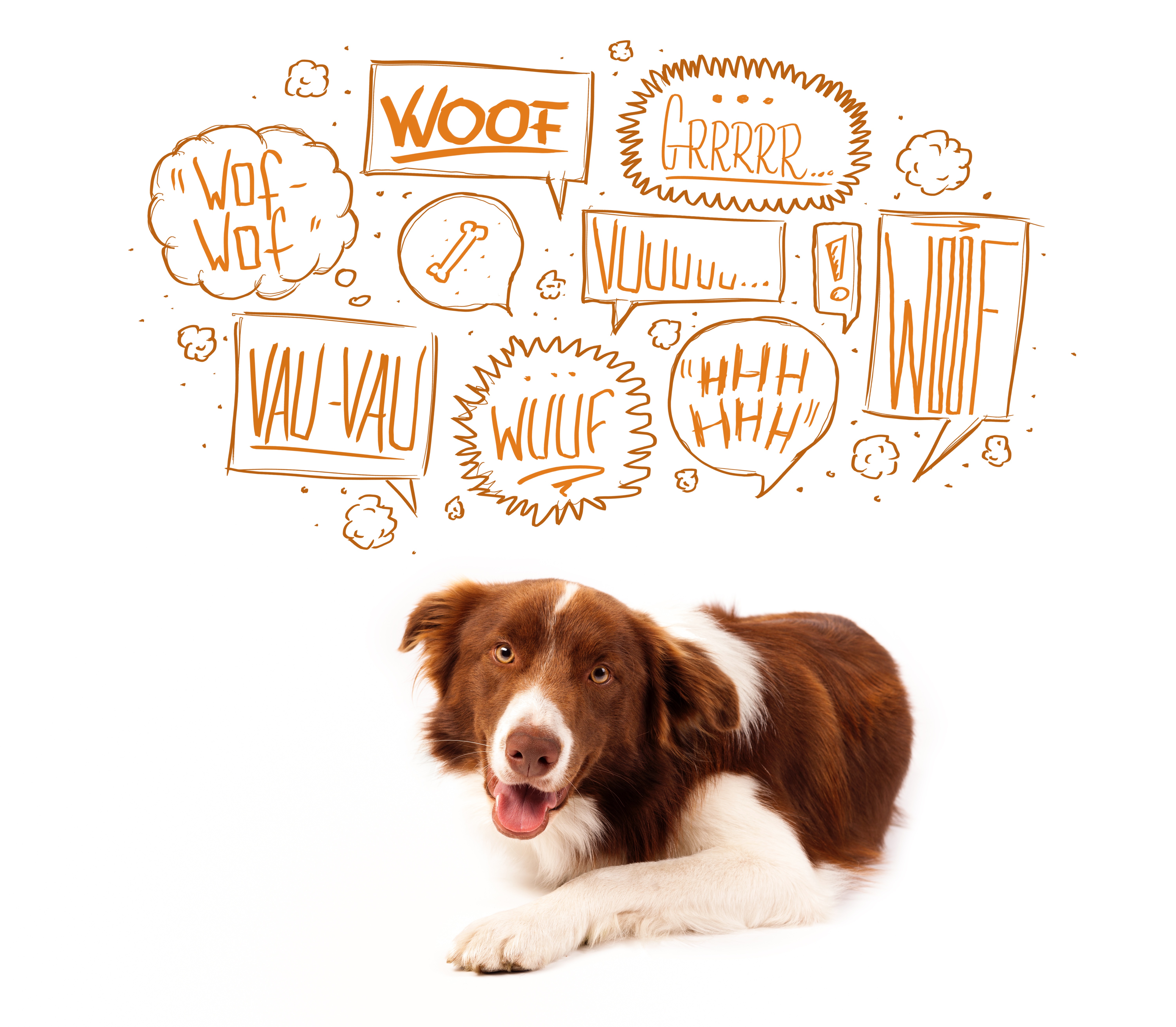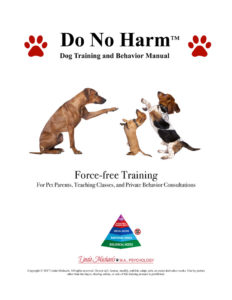This is an excerpt from Linda’s book, Do No Harm™ Dog Training and Behavior Manual, available to download here.
Does your dog bark while running in circles, bay at the moon, bark at bugs, or scare your visitors out of their boots?
Dogs bark:
• To repel intruders (alarm barking)
• For attention
• During play
• As an outlet for energy
• In separation anxiety distress
• To demand something from you
Barking is as natural a vocalization for dogs as speaking is for humans. Basic barking is normal, but incessant barking may indicate an unhappy dog that has developed a behavior problem. Here are some non-aversive training tips to help bring peace and quiet to your home.
First, identify why your dog is barking. Then address each trigger separately.
Either
• Remove the trigger
• Modify the trigger
• Teach your dog to do something other than bark when triggered
• Decrease your dog’s sensitivity to the trigger in order to decrease the frequency and intensity of barking.
Teach your dog from the start that barking is not rewarded. If you have a multiple-dog household there is often an “instigator barker”, so train each dog separately starting with the instigator. Remember this important learning principle: Behaviors that are rewarded increase in frequency, so reward your dog with attention, affection, or treats only when she is calm.
Alarm Barking
Desensitize your dog so that the doorbell no longer warns “scary stranger is here” but proclaims “cookie-friend is here”. Have visitors carry treats and/or mount a treat bag on your doorknob that reads, “Please feed the animal”.
If you’re home, interrupt and redirect your dog to another location. For example, call your dog and ask for a quiet “sit” in front of the refrigerator, give a treat for a “down/stay” in the dog bed, or easiest of all, throw treats out in to the backyard where your dog will focus his energy on grazing rather than barking.
Alternatively, put your dog in a quiet location until she calms herself down. Again, calm behavior gets the attention and treats, whereas barking doesn’t.
For recurring outdoor noises near your home, try an audio blocker such as background TV (happy channels only) or stereo (calming music only) and desensitize your dog by pairing treats with the trigger sound. If dogs passing by or squirrels out in the yard cause barking, rearrange and manage your dog’s location so there’s a visual blocker rather than a “guard station” where your dog stalks, sits, or lies in wait. Provide your dog with novel stimuli to replace guarding activities and give him plenty of exercise to relieve pent-up energy.
Demand Barking
Never give in to: “I want treat, I want you, I want outside” barking. If you provide the desired item or any reinforcement, you’re teaching your dog to repeat the behavior over and over again. Reward for quiet and well-mannered behavior, but turn away or walk away in response to demand barking.
What Not to Do
The use of citronella collars, electric bark collars, spray bottles, shouting, or shaking cans of marbles near delicate ear structures have unsuspected and undesirable side-effects. The use of these items is punishment. Punishment may incite your dog to aggress, become fearful, damage your relationship, and nurture a negative association/relationship with whatever or whoever your dog is barking at. We want your dog to calm down, not totter on the brink of aggression or shut down. Never punish your dog for barking because next time she may forego the bark and just bite.
Your dog is smart and will learn what you “teach” her. Learning how to communicate in a language your dog can understand is the key to the wonderful relationship you’ve always dreamed of having with your dog.
Learn more about pet parent problem-solving, teaching classes, and private consultations in the Do No Harm Dog Training Manual.
 The Do No Harm™ Dog Training Manual was designed as my own personal guide for teaching basic manners classes, and evolved into a reference manual for my private behavior consultations. Created as a practical guide for either or both training formats, it is also helpful for pet parents who want an inside look at dog training and behavior, as well as for those who seek force-free solutions for specific problems. Written with love for the “heartbeats at our feet”. You can purchase and download the PDF ebook dog training manual here.
The Do No Harm™ Dog Training Manual was designed as my own personal guide for teaching basic manners classes, and evolved into a reference manual for my private behavior consultations. Created as a practical guide for either or both training formats, it is also helpful for pet parents who want an inside look at dog training and behavior, as well as for those who seek force-free solutions for specific problems. Written with love for the “heartbeats at our feet”. You can purchase and download the PDF ebook dog training manual here.
Linda Michaels, “Dog Psychologist,” M.A./Psychology a Top Ten Rated U.S. Dog Trainer — Del Mar Dog Training, may be reached at 858.259.WOOF (9663) or by email: LindaPositively@gmail.com for private manners/obedience instruction and behavioral consultations near Del Mar and the San Diego Coast. Please visit us at DogPsychologistOnCall.com All rights reserved.


